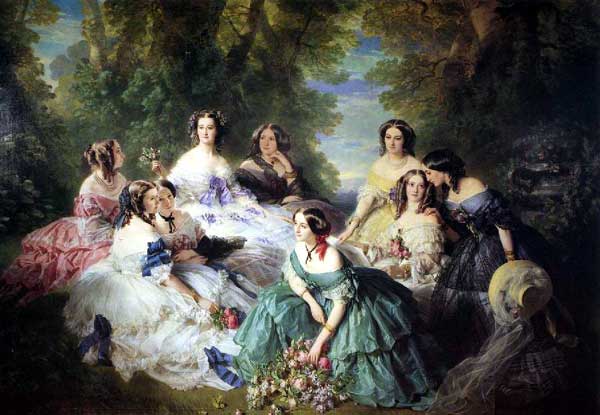CRINOLINECrinoline is a fabric composed of cotton warp, horsehair filling or all cotton yarns. It is sold in varying widths, and is used by tailors and dressmakers in stiffening clothing. It first appeared in 1830. The name crinoline comes the combination of two latin words: crinis (hair) and linum (flax).
Empress Eugenie , wife of Napoleon III. Franz Xavier Winterhalter Crinoline fashion was invented in France in 1830 and crinoline craze spread throughout the world.It is a cheap cloth of low texture and simple construction, THE DISTINGUISHING FEATURE. being the stiff finish with either a dull or highly glazed face on the cloth. Crinoline, having a horsehair filling, requires a loom of special construction to handle the hair, as it is hung in a neat bundle on the end of the loom, the hair being of a uniform length and color, generally black; the mechanism on the loom drawing a strand of hair from the bunch and placing it in the shed formed by the harness. A herring-bone twill weave is used in this grade of the cloth.
|
Practically
the same effect
can be produced by using a glazed warp thread and a cotton filling. The glazing process is to take the cotton warp thread, and after charging heavily with a solution of sizing, the yarns are run through super-heated cylinders and rollers, the
effect being a highly polished surface to the yarn. |


